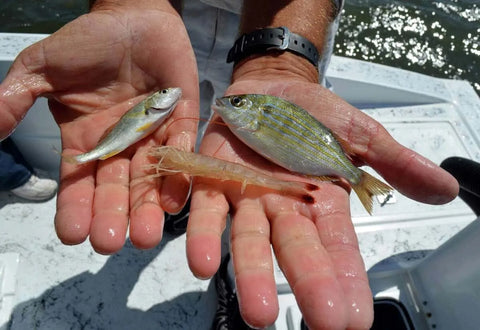Table of Contents
The Pros and Cons of Using Live Bait vs Artificial Lures
Fishing offers a diverse and engaging experience for anglers, who frequently face the decision of whether to use live bait or artificial lures. Both choices come with their own set of pros and cons, and picking the best one will depend on a number of factors. In today's article, we'll compare and contrast live bait with artificial lures so you can make an educated choice for your next fishing excursion.

Introduction
Live bait, such as worms, minnows, grubs, and insects, contain natural oils and scents that effectively attract fish. Artificial lures, conversely, are man-made replicas designed to mimic the appearance and movement of baitfish and other prey. Although lures cannot match the real thing, they are more convenient and portable.
The approach a fisherman chooses depends on the kind of fish they are trying to catch, equipment needs, and personal preference. Both methods have led to successful fishing on the water, so anglers must weigh the advantages and disadvantages of live bait versus artificial lures to determine the superior strategy for their next fishing trip.

Pros and Cons of Using Live Bait
Live bait tends to elicit a stronger feeding response in fish and can provide a fresher scent that fish find irresistible. Live bait may be necessary to catch difficult fish or when fish are less active. However, live bait also has significant downsides.
Live bait requires frequent replacement to keep it lively and appealing. It must be kept on ice or in a bait well with aerated, oxygenated water, which can be messy and time-consuming. There is also a limited lifespan for different types of live bait. Minnows and worms may only last a few days, while nightcrawlers can last up to a week.
In comparison, artificial lures can be reused repeatedly and do not expire, reducing costs and waste. Lures come in various styles, colors, sizes, weights, and action types to match different conditions and fish behaviors. Although lures may not trigger feeds as instinctively as live bait, experienced anglers have found ways to naturally present lures.
When convenience, cost, and environmental impact are priorities, artificial lures prove far superior to live bait. However, live bait continues to reign supreme despite the additional effort required for the purist or, in situations calling for the freshest, most reactive bait. The pros and cons of each must be weighed based on personal values and fishing goals.

Pros and Cons of Using Artificial Lures
Artificial lures are synthetic imitations of baitfish and insects that mimic natural prey and triggerfish feeding responses. Some key benefits of lures are their reusability, versatility, and mimicry of a wide range of baitfish behaviors. Experienced anglers can choose lures that match the specific kind of fish they seek to catch and the conditions they are fishing in.
Lures are highly adaptable to match water depth, water clarity, prey types, and fish activity levels. They can be trolled, cast, plugged, jigged, tossed, floated, or pitch cast into almost any fishing scenario. Once a fish is caught, the lure can be directed to another spot and used again to catch additional fish of different species.
In contrast, the main downside of artificial lures is that they may not trigger bites quite as instinctively as live bait, especially from wary or pressured fish. Lures also tend to be more expensive, especially high-quality ones. Some anglers find certain lures difficult to cast compared to the bait. And there is a learning curve involved in mastering and enjoying using artificial lures effectively.
For the novice or on a tight budget, live bait can remain a simpler and more affordable option. But with practice and persistence, the pros of artificial lures, including consistency, versatility and reusability, making them a superior choice for many anglers. As with live bait, the benefits of lures come down to how and where they are used and personal preferences around convenience, effectiveness, and experience. With an open and patient approach, the pros of artificial lures can be enjoyed for years of enjoyable and successful fishing.
Conclusion
Both live bait and artificial lures have distinct advantages and disadvantages, making the choice a matter of personal preference, target species, and fishing conditions. While live bait offers a natural and versatile approach, it can also require more maintenance and may be subject to regional regulations. On the other hand, artificial lures offer greater durability and adaptability but may necessitate a more skillful presentation to entice fish. Ultimately, understanding the pros and cons of each option enables anglers to make informed decisions and tailor their fishing strategies accordingly. Experimenting with both live bait and artificial lures can not only enhance an angler's versatility but also contribute to a more fulfilling and exciting fishing experience.
